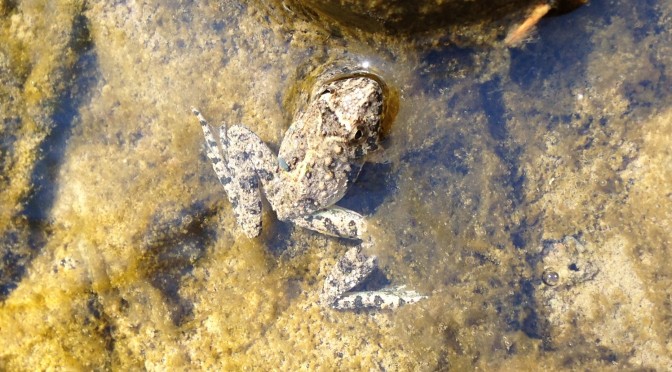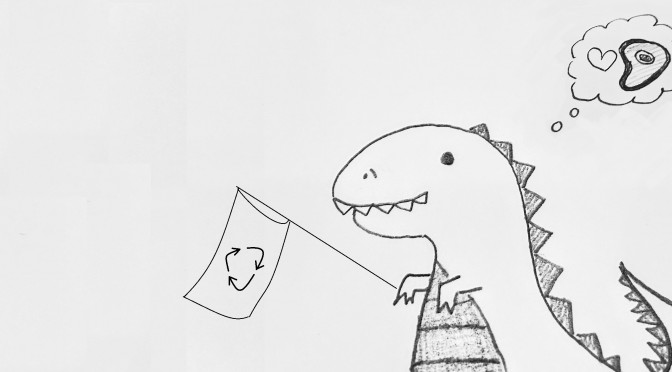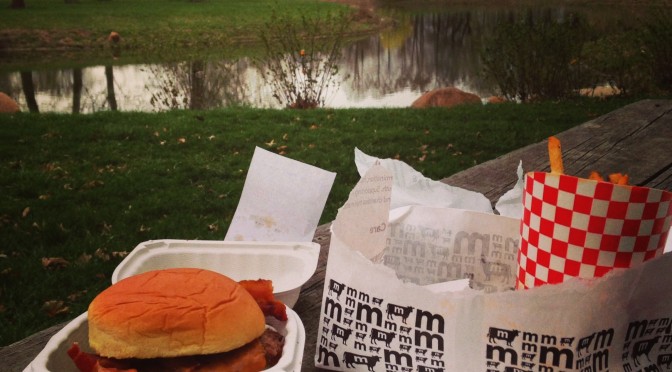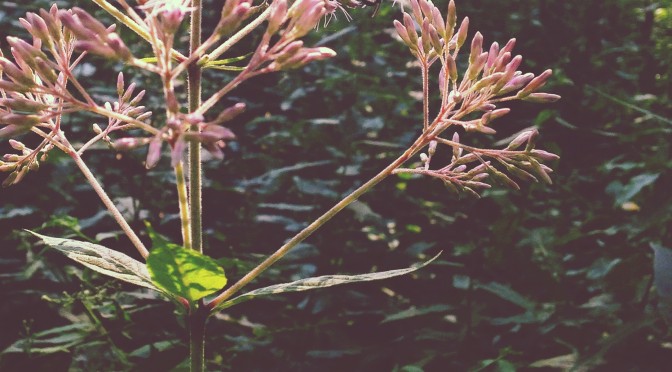I have had three separate encounters with black bears. The first occurred when I was about elementary school aged. A little black bear hanging on the side of the road, decorated with a number of green tags in his ears. The young bear, known as “green tags” was a local attraction – a bear that had learned the benefits of waiting for cars to pull up and feed him through their windows. Despite the ranger’s attempts to discourage people from feeding him, few visitors could resist the curious bear begging for food. While we made sure to keep the windows all the way up when we stopped by for a visit, I remember how amazed I was that a wild animal could be so calm and seem so harmless.
My second and third encounters were both within the past year and both occurred while I was riding my bicycle. The first of the two did not give me a clear look but was more of a dark mass running off into the thick trees and bushes next to the road. The bicycle must have scared the bear, causing it to flee from its spot at the edge of the brush and sprint off into the more protected areas. It’s amazing to realize how close to the bear I actually was, and it’s a good thing it didn’t feel threatened by me or it may have chosen the much shorter run that was in the opposite direction, straight into my path.
The second time seeing a black bear on my bicycle was on a long stretch of road. I was riding towards a bend in the road, moving along at a decent pace. The bear made a mad dash from the left side of the road to the right, before it began running alongside the road, towards me. I was a bit nervous at this point, since it was the very beginning of spring and the bear who was likely to be fresh from hibernation and hungry, was running at me. Luckily he was a good 100 meters away, but the gap was quickly closing. The bear stopped running, turned around, ran back up the road crossing it and dashing back into the bushes and trees from where he came.
While there was plenty of distance between the bear and I, it was unsettling how quickly it could move. It was easy to admire the size and mass of the bear, as well as the sense of danger it exuded. It was most likely an adolescent bear but I can’t imagine the feeling I would have had if a fully grown black bear was charging at me. A black bear typically is similar height to humans when standing on their hind legs, around 4 to 6 feet. Its short stubby legs support a thick 200-500 pound body that is cloaked in black or dark brown glossy fur coat. All four cereal bowl-sized paws have dangerous inch long curved claws, laying in each of its five toes.
Bears at first glance can seem all cute and cuddly with their round bodies and stubby limbs, but then you remember the strength hidden under that glossy fur. According to the Illinois wildlife directory, if you get into a situation where a black bear attacks you, you’re never supposed to play dead. Instead you should try to fight it off. This is different than other bears, like the brown bear, where playing dead is your best bet for survival. In an ABC news article, Bill Stiver a wildlife biologist, the method of trying to fight back is due to the bear’s protective instincts (Murray). A brown bear will attack if defending their cubs and continue attacking until the threat is gone, but a black bear has a less protective nature and thus is less likely to attack to defend their cubs, but to attack from being threatened. This means that a black bear won’t stop attacking if the threat is gone, but will continue attacking longer.
While it’s good to know this, it’s quite unlikely to find a bear in Illinois. These large predators have all been driven out of Illinois for more than 150 years (Young) and only recently have they been making a comeback in the state. Just this year, a black bear was spotted making its way about the Chicagoland area. A flood of articles, videos and reports emerged from news sources like the Chicago Tribune, CBS local news, and the Illinois Times reporting the sighting and discussing the possibilities of the black bear’s return to Illinois. All this attention has brought the black bear to the public’s eye, and has helped to get a bill passed that will allow “IDNR [Illinois Department of Natural Resources] the authority to manage these species for the protection of both wildlife and public safety” (Young). This makes the black bear protected in Illinois, and gives the IDNR the ability to assist in relocating the bear if it is causing someone problems, rather than killing it.
But what is causing this recent reappearance for the bears? According to Jim Williams, the author of an article about the new sightings of black bears in Illinois, “the potential for bears is increasing because the black bear population is growing in neighboring states”. Black bears in places like Wisconsin, where populations are booming, are running out of room for their territories and looking in new places to live leading them to places like Illinois. Sadly there is not much for them here. The big furry creatures find themselves trapped in the suburban sprawl of the northern part of the state with few areas that could provide them a proper home. Specifically, only 14.7% of Illinois can provide a proper home for a black bear (Young). But for the black bears that are able to find these areas, they have the ability to flourish and inhabit Illinois once again.
Works Cited
Black, Lisa. “Bear, wolf, cougar added to state protected list.” Chicago Tribune. Aug 26 2014. Wed. Nov 8 2014.
Miller, Marc. “Mountain lions, wolves and black bears in Illinois?” Guest Opinion, Illinois Times. Jan 9 2014. Web. Nov 8 2014.
Murray, Rheana. “How to Survive a Bear Attack”. ABC News. Apr 14 2014. Web. Nov 8 2014.
“United States Estimated Populations of Resident American Black Bears in 2011”. Black Bear Population by State. The Black Bear Society. 2013. Web. Nov 8 2014.
Williams, Jim. “More Black Bears Could Be Headed To Illinois, Even Chicago: Experts”. CBS Chicago: Local. June 19, 2014. Web. Nov 8 2014.
Young, Chris. “American black bears, mountain lions and gray wolves to be protected in Illinois.” Illinois DNR News. Illinois department of natural resources. Aug 25 2014. Web. Nov 8 2014.
“Black Bear (Ursus Americanus)”. Wildlife directory. University of Illinois extension. 2014. Web. Nov 8 2014.







